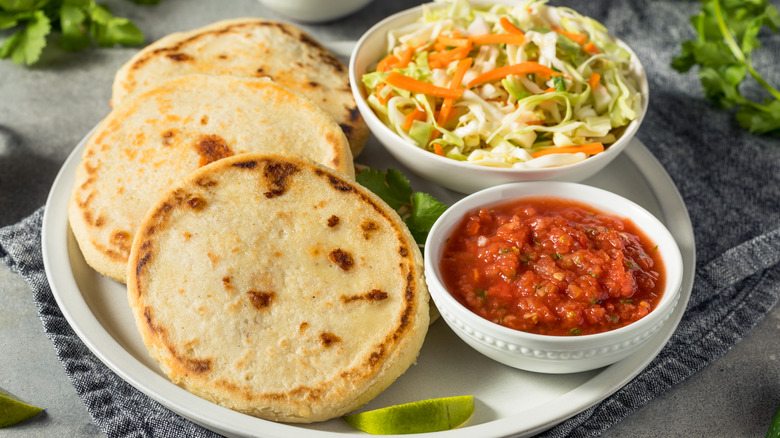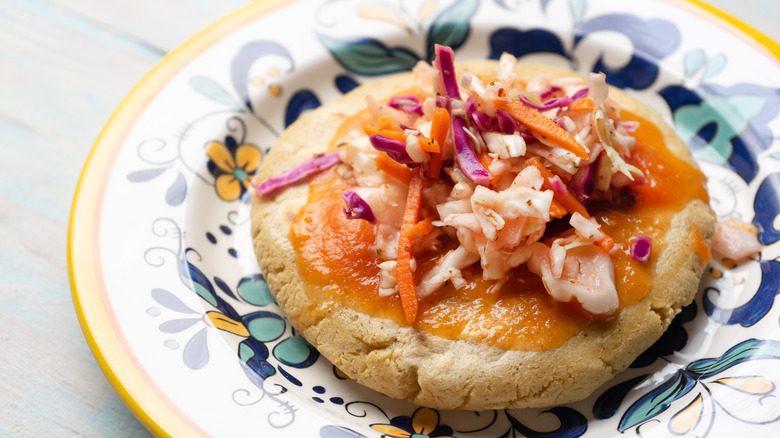Pupusas Are The El Salvadorian Dish Everyone Should Try Once
There is one dish in El Salvador that is making all the, ahem, rounds: pupusas. These thick, pillowy tortillas are made of corn masa, stuffed with a variety of delicious fillings, and cooked on a griddle until golden brown. When bitten into, the crunchy exterior and soft inside create a satisfying contrast. Common throughout much of Central America, pupusas are similar to Colombia and Venezuela's arepas and Mexico's gorditas.
Pupusas are believed to have originated centuries ago with the pre-Columbian Pipil tribes of El Salvador. Their name likely comes from the Pipil word "pupusawa," which means "to puff up." Artifacts, including pupusa-making tools and preserved pupusa ingredients, were discovered at the Joya de Cerén archaeological site.
Pupusas hold a special place in Salvadoran culture, often enjoyed as a staple street food or homemade comfort dish. They are also a social tradition, bringing families and communities together during festivals and gatherings. From the Fiestas Agostinas to the Festival del Maíz, pupusas are often a central part of the festivities, sometimes even featuring pupusa eating competitions. Pupusas even have a dedicated day of celebration, National Pupusa Day, which is observed annually in El Salvador on November 10. Pupusa making is considered quite the art form, requiring skilled hands to shape a perfect round, as beginners often struggle and end up with square pupusas. Careful formation is also crucial to ensure the filling doesn't leak out during the cooking process.
The many flavorful variations and ways to serve
Pupusas can be stuffed with a wide array of delicious fillings. Imagine sinking your teeth into a pupusa bursting with savory beans, crispy chicharrón, gooey cheese, or the unique, floral taste of tropical loroco blossoms, reminiscent of artichokes. There are also popular variations incorporating chicken, shrimp, or creamy squash. There really is no limit to the creative combinations one can try.
The dough itself also greatly impacts the flavor and texture. Crafted with corn masa, pupusa dough has a distinct corn flavor and a soft, dense texture. There is also a regional variation made with rice flour called pupusa de arroz. This rice flour version originates from the town of Olocuilta and offers a crunchier exterior but with a plainer, more neutral taste.
Pupusas are often served alongside a piping hot cup of cocoa or coffee and are typically topped with curtido, a cold and tangy cabbage slaw, and salsa roja, a rich tomato salsa. If you can't find pupusas locally, you can make them at home. Mix masa harina with water to form a pliable dough. Flatten a small portion into a disc, add your filling, fold it over, and reshape it into a round. Cook on a hot griddle or in a pan until golden brown and crispy. With so many ways to add layers of flavor and texture, it's no wonder this special Salvadoran dish is a cultural staple!

